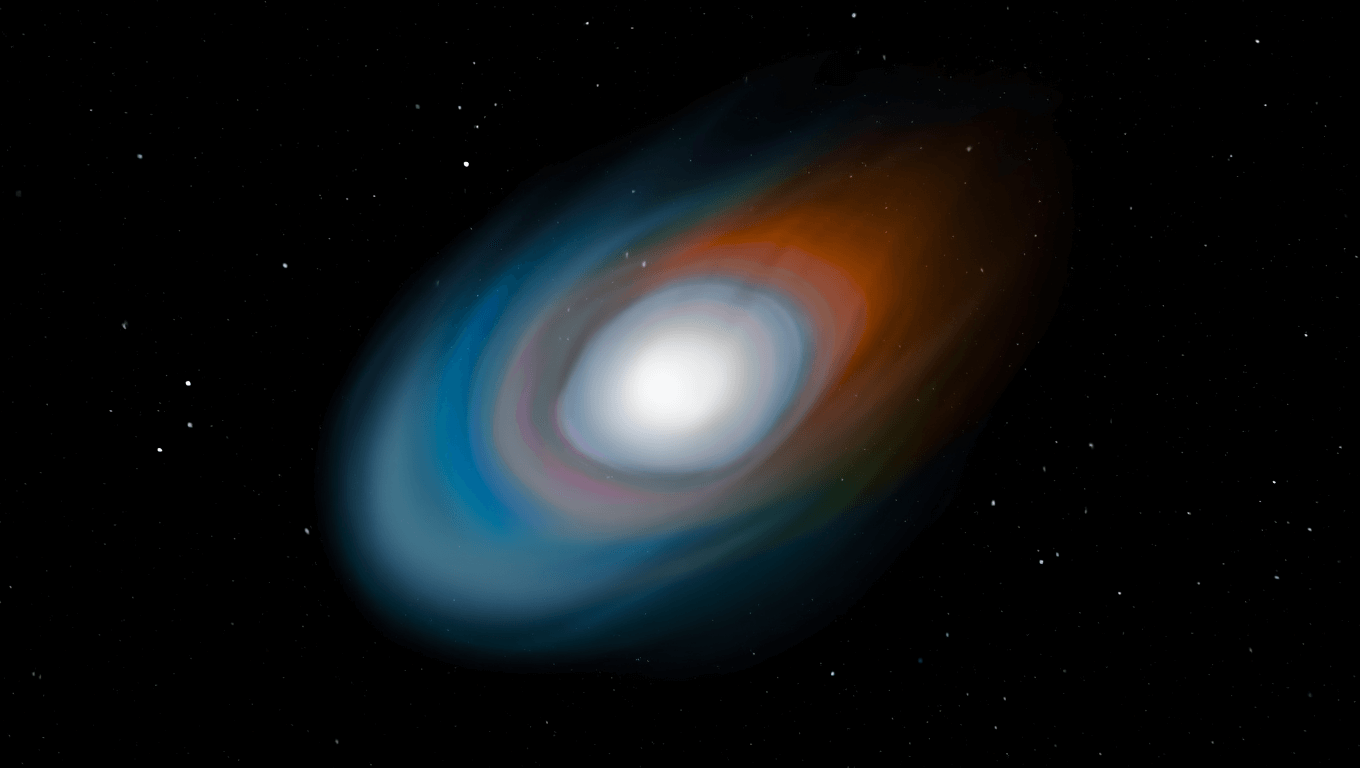Comet 3I/ATLAS is releasing mysterious nickel vapor as it approaches the Sun. This rare interstellar visitor reaches its closest point on October 29, 2025. The 4-gram-per-second nickel emission has scientists baffled. It’s the third known comet from outside our solar system ever detected.
🔥 Quick Facts:
- Discovery: Found on July 1, 2025 by NASA’s ATLAS telescope in Chile
- Perihelion: Reaches closest point to Sun on Oct. 29, 2025
- Distance: Will approach within 130 million miles (between Mars orbit)
- Speed: Traveling at 137,000 mph when discovered, increasing as it nears sun
- Size: Nucleus estimated between 440 meters to 3.5 miles diameter
- Reappearance: Visible again in early December 2025 after solar conjunction
What Happened: The Nickel Vapor Mystery
Scientists detected glowing nickel vapor emanating from Comet 3I/ATLAS at an extraordinary distance from the sun. The discovery shocked astronomers worldwide. Temperatures at that distance remain far too cold for metals to normally vaporize. The comet releases approximately 4 grams of nickel per second, an unprecedented phenomenon.
Research teams observed no accompanying iron emissions. This breaks all known cometary chemical patterns. Traditional solar system comets emit various metals as they warm. But pure nickel vapor alone contradicts established science.
“The chemical signatures we’re observing may reflect both the comet’s ancient origins and its long journey through interstellar space.”
The James Webb Space Telescope captured infrared data showing the composition details. NASA’s SPHEREx mission also observed the comet between August seventh and fifteenth. Multiple space agencies have mobilized to study this visitor before it passes behind the sun.
Why This Matters: A Cosmic Mystery Unfolding
This interstellar comet arrives from another star system in the constellation Sagittarius. It drifted through interstellar space for millions or even billions of years. Now it’s finally visiting our cosmic neighborhood. Understanding it could reveal secrets about distant solar systems.
The nickel vapor anomaly challenges everything astronomers thought they knew. It suggests either unprecedented chemical processes or composition unlike anything in our solar system. Scientists can’t yet explain the mechanism creating this nickel discharge.
For experts like Harvard astrophysicists studying the phenomenon, this moment represents a rare opportunity. Only three interstellar objects have ever been discovered passing through Earth’s solar system. The first was ‘Oumuamua in 2017. The second was 2I/Borisov in 2019. 3I/ATLAS represents our third cosmic visitor from beyond.
Earth faces no danger whatsoever. The comet will remain a minimum of 1.8 astronomical units (roughly 170 million miles) away. It’s approaching Mars first before continuing away from our sun.
The Details: Observation Timeline and Data
Multiple NASA missions are tracking this remarkable object as it approaches perihelion:
| Mission/Tool | Observation Data | Status |
|---|---|---|
| Hubble Space Telescope | Size estimate: 440m-3.5km nucleus diameter | Ongoing through Oct. 2025 |
| James Webb Space Telescope | Infrared spectrum analysis, metal composition | August 6 observations complete |
| SPHEREx Mission | Multi-wavelength observations conducted | Aug. 7-15 observations logged |
| Mars Orbiters | Mars close approach on October 3, 2025 | Positioned for detection |
| Europa Clipper | Potential Jupiter trajectory intercept | Monitoring planned |
The ATLAS discovery on July first came from the Chile telescope in Rio Hurtado. Archival observations extended back to June 14, 2025. Pre-discovery data came from multiple ATLAS sites worldwide and California’s Zwicky Transient Facility.
The comet’s nucleus appears as a teardrop-shaped cocoon when observed by Hubble. This dust envelope streams away from the solid icy core. Temperature analysis suggests extreme heating occurring at unusual distances from thermal radiation.
What To Watch For: Upcoming Cosmic Milestones
- October 29, 2025: Perihelion occurs. The comet reaches maximum solar proximity.
- Late October 2025: Passes behind sun relative to Earth. Ground-based telescopes cannot observe.
- Early December 2025: Reappears on sky’s other side for renewed observations.
- March 2026: Comet approaches Jupiter during outbound trajectory from solar system.
- Spectral Changes: Watch for composition shifts as thermal pressure increases dramatically.
The next two months represent a critical observation window for scientists globally. Additional nickel vapor data will likely emerge as temperatures intensify.
Future observations may reveal whether the nickel emission increases or stabilizes. This data could unlock why this interstellar visitor differs chemically from all solar system precedents. Scientists remain intensely focused on every technical reading.
Could This Interstellar Visitor Reveal Secrets About Distant Worlds?
The timing couldn’t be more perfect for studying 3I/ATLAS. Modern space telescopes have never tracked an interstellar comet this closely before. The James Webb Space Telescope provides unprecedented infrared capabilities for chemical analysis. Ground-based observatories contribute complementary visible-light observations.
Scientists wonder what the nickel vapor phenomenon ultimately reveals about alien solar systems. Did something unique happen during the comet’s billion-year journey through interstellar space? Did its surface composition change from cosmic radiation exposure? Or does the parent star system simply differ chemically from ours?
Harvard astrophysicists have proposed multiple theories. Some suggest exotic metallurgy from an unusual formation environment. Others propose rare processes unknown to Earth-based science. The answers emerge as October approaches.
As October 29th perihelion looms, excitement builds among the astronomical community worldwide. This extraordinary interstellar messenger carries secrets about distant systems. What mysteries does this mysterious nickel vapor hold?
Sources
- Space.com – Surprising nickel detection and ongoing comet analysis
- NASA Science – Official comet tracking and mission coordination data
- Live Science – Latest observations as perihelion approaches
Similar posts:
- 3i atlas reaches closest point to sun Oct 29 as surprising nickel discovery fuels mystery
- 3I/ATLAS sparks alien speculation as ‘Black Swan’ comet reaches closest point to Sun Oct 29
- Baba Vanga’s alien prophecy ignites global debate as mysterious comet 3I/ATLAS approaches Earth in November
- Nostradamus sparks viral fears with 2025 end-of-year predictions, 3I/ATLAS cosmic event linked
- Baba Vanga’s 2025 alien prophecy sparks global debate as mysterious comet 3I/ATLAS passes Earth

Daniel Harris is a specialist journalist focused on the crossroads of breaking news, extraordinary history, and enduring legends. With a background in historical research and storytelling, he blends timely reporting with timeless narratives, making complex events and ancient myths resonate with today’s readers. Daniel’s work often uncovers surprising links between present-day headlines and legendary tales, offering unique perspectives that captivate diverse audiences. Beyond reporting, he is passionate about preserving oral traditions and exploring how extraordinary stories continue to shape culture and identity.

